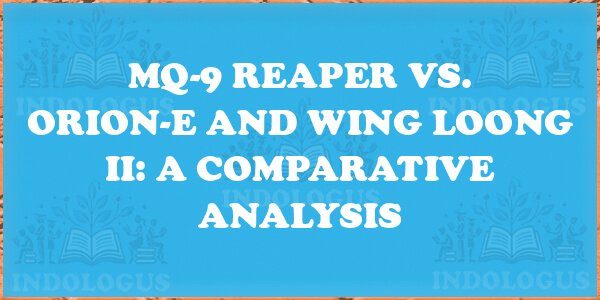In the realm of modern warfare, Unmanned Aerial Vehicles (UAVs) have emerged as crucial assets for intelligence, targeted strikes, and surveillance. Among the prominent armed drones are the MQ-9 Reaper, Orion-E, and Wing Loong II. This article delves into a detailed comparison of these drones, exploring their capabilities in real-world operations, especially in asymmetric conflicts and contested regions.
MQ-9 Reaper: The Benchmark of Armed Drone Warfare
The MQ-9 Reaper by General Atomics Aeronautical Systems is a leading armed medium-altitude, long-endurance (MALE) drone globally. Launched in 2007, it serves as a hunter-killer platform for surveillance and precision strikes.
Key Capabilities
- Endurance & Range: Can fly up to 27 hours with a range of over 1,150 miles.
- Payload: Capacity of 3,800 pounds for various munitions.
- Sensors: Equipped with a multispectral targeting system for high-precision targeting.
- Control & Communication: Operated via satellite uplink for real-time video feeds and secure command.
Operational Experience
The MQ-9 has been extensively used in conflict zones like Iraq, Afghanistan, and Syria for counterterrorism and intelligence operations.
Orion-E: Russia’s Entry into Armed Drone Combat
Overview
The Orion-E by Kronshtadt Group marks Russia’s foray into MALE UAVs, emphasizing networked warfare and long-range operations.
Key Capabilities
- Endurance & Range: Flies up to 24 hours with a range of 1,200 km under satellite control.
- Payload: Supports around 440 pounds for guided munitions.
- Sensors: Includes basic cameras with radar cross-section reduction features.
Operational Experience
Tested in Syria, the Orion-E showcases Russia’s evolving armed drone capabilities, albeit at a nascent stage.
Wing Loong II: China’s Export-Oriented Combat Drone
Overview
The Wing Loong II by Chengdu Aircraft Industry Group is China’s strategic UAV export to nations seeking cost-effective combat drones.
Key Capabilities
- Endurance & Range: Capable of 20 hours flight time with a range of 1,500 km.
- Payload: Carries up to 480 kg of weapons for regional strike operations.
- Sensors: Equipped with radar systems and a laser designator.
Operational Experience
Deployed in countries like UAE and Pakistan, the Wing Loong II has shown mixed performance in conflict zones.
Comparative Analysis
1. Endurance and Operational Range
- MQ-9 Reaper: Unmatched 27-hour endurance and global deployability.
- Orion-E: Close endurance but limited range without satellite control.
- Wing Loong II: Reasonable endurance but less adaptable in contested airspace.
2. Armament and Payload Effectiveness
- MQ-9 Reaper: Diverse payload of proven Western munitions.
- Orion-E: Limited payload options.
- Wing Loong II: Mid-range armament with reliability concerns.
3. Sensor and Targeting Systems
- MQ-9 Reaper: Superior multi-sensor targeting system.
- Orion-E: Basic sensor package.
- Wing Loong II: Adequate sensors but less effective in complex targeting scenarios.
4. Operational Experience and Reliability
- MQ-9 Reaper: Battle-proven reliability in high-risk environments.
- Orion-E: Limited combat deployment and ongoing development.
- Wing Loong II: Mixed performance and reported reliability issues.
Strategic Use in Conflict Zones Like Iran
In a hypothetical U.S.-Iran conflict:
- MQ-9 Reaper: Ideal for ISR missions and precision strikes.
- Orion-E: Requires air superiority support due to limited range.
- Wing Loong II: Vulnerable to mid-tier air defenses in contested airspace.
Key Takeaways for Competitive Exams
- MQ-9 Reaper excels in endurance, armament, sensors, and operational reliability.
- Orion-E showcases Russia’s entry into armed drone combat but lacks operational experience.
- Wing Loong II focuses on cost-effective exports but faces challenges in performance and reliability.



